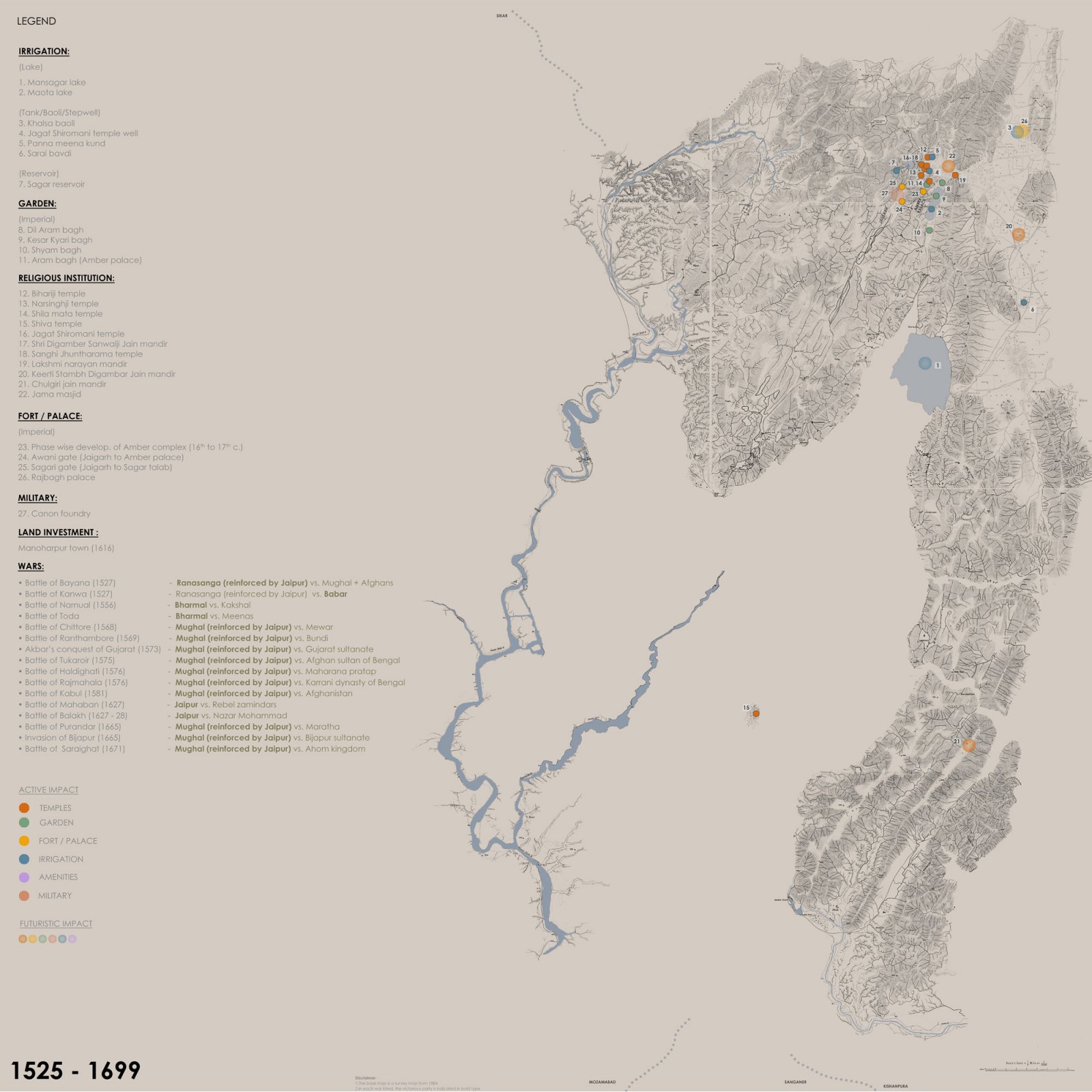Your browser is out-of-date!
For a richer surfing experience on our website, please update your browser. Update my browser now!
For a richer surfing experience on our website, please update your browser. Update my browser now!
This research focuses on the role of the Maharaj in shaping Jaipur’s economic trajectory and architectural transformation from the 16th to 20th centuries. Through an analysis of the agricultural revenue system, the principle of "more land, more income" emerges as a key datum for understanding the state’s economic evolution. Key milestones, such as Mansingh I’s tax-free jagir policy and Jai Singh II’s strategic territorial expansions and urban planning, are traced. Governance shifts under British rule, marked by centralized systems and public infrastructure, further reveal how administrative decisions shaped Jaipur’s growth and its enduring legacy.









